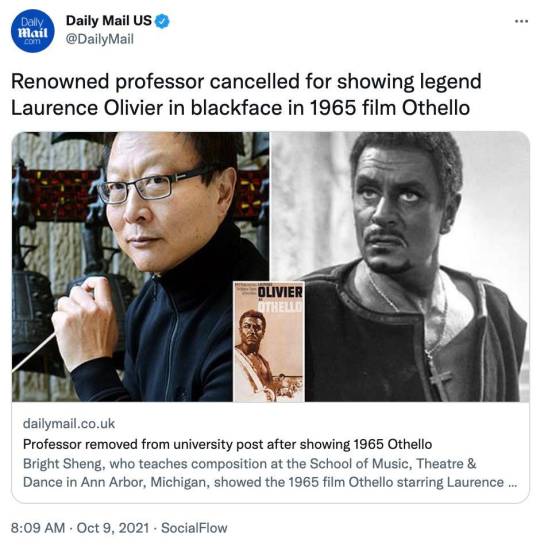#top stories pakistan
Explore tagged Tumblr posts
Text
youtube
#breaking news#anti encroachment#karachi development#karachi Operation#pakistan news#entrepreneur#breakingnews#kmc operation#sohrab goth operation#afghan basti operation#cinematic video#karachi news#newsupdate#top story#update#karachi update#sohrab goth afghan basti#anti encroachment operation#KMC Operation at Rahmanabad#Gulburg Anti Encroachment Operation#Illegal Houses Demolishing#news update#Mehmoodabad Nala#Gujjar Nala#Youtube
0 notes
Text
youtube
#breaking news#anti encroachment#karachi development#karachi Operation#pakistan news#entrepreneur#breakingnews#kmc operation#sohrab goth operation#afghan basti operation#cinematic video#karachi news#newsupdate#top story#update#karachi update#sohrab goth afghan basti#anti encroachment operation#KMC Operation at Rahmanabad#Gulburg Anti Encroachment Operation#Illegal Houses Demolishing#news update#Mehmoodabad Nala#Gujjar Nala#Youtube
0 notes
Text
Nawaz Sharif accepts that Pakistan violated the peace agreement signed with India in 1999
On Tuesday, Former Pakistan Prime Minister Nawaz Sharif accepted the fact that Pakistan had ‘violated’ a contract signed between him and ex-prime minister Atal Bihari Vajpayee in 1999. He made the acceptance while referring to the misadventures done by Gen Pervez Musharraf.
He was addressing a meeting of the PML-N general council of which he was recently elected as a President of the ruling party after being disqualified by the Supreme Court 6 years back. in his address, Sharif said, "On May 28, 1998, Pakistan carried out five nuclear tests. After that Vajpayee Saheb came here and agreed with us. But we violated that agreement...it was our fault."
The said agreement, the Lahore Declaration, between Pakistan and India was signed by Nawaz Sharif and Ata Bihari Vajpayee on February 21, 1999. While the agreement was signed on bringing peace and stability to the two countries, Pakistan showed intrusion in the Kargil district in Jammu and Kashmir a few months later which eventually led to the Kargil conflict.
"President Bill Clinton had offered Pakistan USD 5 billion to stop it from carrying out nuclear tests but I refused. Had (former prime minister) Imran Khan like a person been on my seat he would have accepted Clinton's offer," said Sharif.
Sharif also talked about the role of former ISI chief Gen Zahirul Islam in the conspiracy against his government in 2017 which made Imran Khan the next Prime Minister of Pakistan. "I ask Imran not to blame us (of being patronized by the army) and tell whether Gen Islam had talked about bringing the PTI into power," he said while asking Imran to deny the fact.
For more international news in Hindi, subscribe to our newsletter.
#werindia#leading india news source#top news of the day#top news headlines#top news stories#top news#India#Pakistan
0 notes
Text
India will face Pakistan in the World Cup 2023 on Saturday. Team India has completed preparations for this match. The morale of Team India players is high after winning the pressure match against Australia. At the same time, Pakistan had also achieved a spectacular victory by chasing 300+ runs against Sri Lanka in its last match and after winning two matches, the morale of this team is also at its best.
The match between India and Pakistan is always special and cricket fans all over the world keep an eye on this match. For this reason it is also called Mahamukabala. The competition between the two teams in the World Cup match will not only be exciting, but the mutual battle between some players is also going to be fun. Here we are telling about four such pairs of players from both the teams.
#India Super News Hindi Read Latest news in Hindi of India#State#Top Stories#Naukri#Politics#Business#Bollywood#Health#Lifestyle#Aaj Ka Rashifal#Cricket#Education#Sports at India Super News Hindi#India Super News#भारत-पाकिस्तान मैच मे�� इन सात खिलाड़ियों के बीच होगी टक्कर#कुलदीप और बाबर के बीच मचेगा मुकाबला#india vs pakistan match
1 note
·
View note
Text

The Story Of The Soviet Pilot Who Defected To Japan With A Secretive MiG-25 Foxbat
September 6, 2016 Military Aviation, Military History, Russia, Troubled Areas
Image credit: Alex Beltyukov
OTD in 1976, Viktor Belenko, “stole” a MiG-25 and landed in Japan.
The then Lieutenant Belenko was a pilot with the 513th Fighter Regiment, 11th Air Army, based in Chuguyevka, Primorsky Krai, in the east of the country. When he brought his MiG-25 “Foxbat” to Hakodate he gave the Western intelligence officers the opportunity to give a first close look at one of the most secretive airplanes of those years: a supersonic interceptor featuring a powerful radar, four air-to-air missiles and a top speed above Mach 3.
In order to assist the American experts in evaluating the aircraft, Belenko brought with him the pilot’s manual for the MiG-25 “Foxbat”, expecting to assist American pilots in evaluating and testing the aircraft. Even if the Japanese government didn’t originally give full access to the plane, the Americans were later invited to examine the aircraft extensively: the MiG was dismantled for such purpose and later returned to the Soviet Union.
In his “MiG pilot” book (1983) John Barron claims that Viktor Belenko’s defection was completely voluntary and was the result of Belenko’s distrust on communist regime.
The MiG was delivered to Japan without the missiles, which were to be introduced in the Belenko’s training later on. The mission was launched earlier than initially planned, because the KGB was about to stop Viktor Ivanovich Belenko from defection.
Although pilot defections during the Cold War were not a rarity, what made Belenko’s defection unique was the fact that the MiG-25 was largely unknown in the West. This is the main point to bear in mind when thinking about Belenko and, unfortunately, this fact is often forgotten.
The ideological background for the events which took place in 1976 is deeply rooted in the beginnings of the post-war period. As the Cold War was in progress there were many incidents and crises which closely led to a confrontation between the two superpowers. One of these events was Francis Gary Powers’s U-2 spy flight on of May 1, 1960.
Power’s U-2 took off from USAF Peshawar Air Base in Pakistan for a GRAND SLAM mission, to investigate the Soviet missile and plutonium production plants. Targets were Sverdlovsk, Plesetsk (ICBM sites) and Mayak – a plutonium plant.
The U-2 was a plane designed to fly well above the Soviet air defense Surface to Air Missile systems. Its operational ceiling was out of the range of the Soviet interceptors and missiles but Powers’ flight was expected, all of the units and surface-to-air defenses were put on alert. The MiG pilots were ordered to ram the aircraft if necessary. The U-2 was eventually shot down by an S-75 Dvina missile near Degtayrsk in the Ural region. Because of high g-force Powers had no chance of reaching the airplane’s self-destruction button and had to eject.
What is interesting is the fact that SAM crews did not know that the plane had already been shot down because the MiGs’ IFF transponders were not updated (May 1st is a national holiday), therefore several Soviet aircraft were also shot down by S-75 rockets.
The political consequences of the spy flight were severe.
Shortly after the incident the Americans created a cover up story for Powers’ failure. NASA had announced in a very specific press release that the pilot, having lost consciousness due to the problems with the oxygen equipment, had strayed into the Soviet territory with his autopilot engaged while carrying out a weather flight.
On May 7, Khrushchev announced that Powers had survived the crash and, nine days later, on May 16, 1960, during a Four Powers Paris Summit meeting with Harald MacMillan, Charles de Gaulle and Dwight Eisenhower he called the U-2 incident an act of a “deliberate aggression.”
Eisenhower refused to apologize for the incident, claiming that the U-2 flight was not of aggressive nature, having only a purpose of ensuring US safety. The meeting collapsed. At the time, Eisenhower was a proponent of so-called Open-Sky Policy, according to which both sides would allow for reciprocal reconnaissance flights over their territories. Khrushchev did not agree. Powers was sentenced to 7 years of hard labor in a Gulag, but he was exchanged for a Russian spy Rudolf Abel on the famous Glinecke Bridge in Potsdam, connecting West and East Germany.
Gary Powers incident sparked the development of the American Oxcart programme, with the goal to design the SR-71 spy plane, which in addition to flying high, also flew very fast, out of the range of the Soviet missiles’ operational envelope.
What is more, a D-21 drone reconnaissance system was developed, to be carried by SR-71 as a parasite. The drone would be dropped, fly over the Soviet Union, return over the Pacific and drop the reconnaissance materials on a parachute.
Both these designs led to the development of a Soviet countermeasure – the MiG-25, known in NATO code as the Foxbat.
MiG-25 take off

The main reason for the importance of Belenko‘s defection cannot be understood without going deeper in the aviation context of the event. The Cold War was the time when both sides used the nuclear armament as a psychological weapon. Therefore ways to deliver warheads were some of the priorities in the development in the field of military industry.
One of the ways to deliver warhead to its target was to use the strategic bomber. The bombers in the US – the B-52s – were subsonic, and could have been easily intercepted by the MiG-21, which was capable of reaching speeds of Mach number up to Mach 2 and altitudes of 60,000 feet.
Problems began to emerge when the B-58 Hustler was designed. This plane was capable of flying with the same level of performance as any MiG-21, which for the Soviet designers meant they had to look for a better countermeasure.
The Strategic Air Command of the United States Air Force at the time was into creating a nuclear-powered bomber of infinite range. The project had been dropped in 1964 when North American aviation announced that it could build a bomber capable of attaining speeds of Mach 3 throughout the entire length of its mission.
Secondly, after the failure of U-2 spy plane, launched the Oxcart program, which lead to the development of Mach 3 strategic reconnaissance aircraft, SR-71.
That put the Moscow designers on alert, and an assignment was given to the design bureaus of MiG (Mikoyan and Gurevich) and Sukhoi to develop a countermeasure.
The surface-to-air missiles were considered insufficient. The aim was to develop a single-seat interceptor capable of attaining extremely high speeds and altitudes.
New problems for the Soviet scientists emerged, such as thermodynamic heating, leading to immense development of the Moscow research institute, TsAGI – transliteration of the Russian abbreviation which stands for Центра́льный аэрогидродинами́ческий институ́т (ЦАГИ) – Central Aero-Hydrodynamic Institute. Mikhail Gurevich was the leader of the MiG-25 project.
According to Discovery Channel’s TV series Wings of the Red Star many Western experts argue that the Foxbat was inspired by the North American Aviation A-5 Vigilante. The design programme for MiG-25 was founded in 1958. The basic design of E-155 which later became MiG-25 was the work of Artion Mikoyan.
The E-155, the prototype of what was to become Foxbat was propelled by two large turbojet engines designed by Tumansky. The prototype itself was designed in the period of 1961-1962.
No aluminum, so popular in the West at the time, was used for construction. Steel and nickel alloys were used instead, with limited use of titanium on leading edges and places where heat loads were expected to be high.
The aircraft had to be light, to that extent that weight was traded for strength. The G-load it could withstand was only 5 g, two times less than other fighters which were designed to fight in close combat.
The maiden flight of E-155 was made by famous MiG test pilot, Alexander Fedotov on May 1, 1964.
The MiG-25’s mission as an interceptor required development of fire control system which would be able to work at the speeds the plane could reach.
The radar on the plane, RP-25 Smerch, designated in the NATO nomenclature as Foxfire, 1,100 pounds in weight, was the largest device of this type at the time. According to Barron, the radar was very powerful (600 kilowatts), as
“[Belenko] also dared not touch the radar switch because the impulses from the MiG-25 radar were so powerful, they could kill a rabbit at a thousand meters. Hence, it was a crime to activate the radar on the ground.”
Its purpose was to burn through any jamming systems known at the time and to provide a stable lock-on allowing the pilot to use the air-to-air missiles that Foxbat was carrying.
Also in May of 1964 the XB-70 aircraft was made a research airplane, and presented to the public in Palmdale, California, after being canceled three times (in 1959, 1960 and in 1961). At same time, the U-2 missions were still a danger, so as the SR-71, US Air Force ultimate Mach 3 spy plane. For these reasons the development of Foxbat was not canceled.
Mikoyan left his design bureau in March 1964 for health reasons. Never had he an opportunity to see the MiG-25 enter service dying in December from the heart attack.
In March 1965 the first public announcements of the plane’s performance were made, which was that it completed 150 kilometers closed circuit flight at the speed of 1,400 miles per hour.
The Foxbat made its first public appearance at the airshow organized in connection with the celebration of the 50th anniversary of the October Revolution on Jul. 9, 1967 on the Domodedovo airfield. When three MiG-25s appeared in the sky the show announcer referred to them as “Interceptors capable of Mach 3”.
Both the Western experts and Russians were puzzled, as even in the Soviet Russia there was almost no information about the MiG-25 available to the public whatsoever, up until 1972.
Mig-25 side takeoff

Besides being an interceptor, the Mig-25 was also a high altitude reconnaissance aircraft. It was operated in the conditions of direct radio communication with the ground and was capable of taking photographs of whole United Kingdom within one flight.
The West had an opportunity to see what the aircraft was capable of in a proxy war between Israel and Egypt.
Four MiGs, referred to as X-500, were shipped to Egypt in fall 1971. The Egyptians were forbidden to come close to them, and even though the aircraft had Egyptian markings, they were flown by Soviet pilots and serviced by Soviet crews.
When one of the Israeli F-4 Phantom fighters tried to intercept the MiG reconnaissance aircraft at Mach 2,5, the MiG simply accelerated to Mach 3.2 and disappeared.
The MiG-25 engines were capable of producing 12,500 kG each. The design assumptions of the construction were not to create a good close combat fighter, but to propel it throughout the airspace as fast as possible.
In the late 1960s the USA developed the F-15 which was a fruit of the vague understanding of what MiG-25 was. That understanding was based on the speed and altitude records Foxbat had broken (see below).
The Western experts assumed that it was faster in straight line than expected. They also thought that it was made of lightweight, modern composite materials and that it was powered by modern turbofan engines. It was also believed to have a long-range and good close air combat capabilities.
As a result of that, American engineers designed the ultimate fighter jet, which was very complex, and due to that – quite costly. In the beginning of its existence it broke many of the climb records established earlier by hte Foxbat.
It was late 1972 when F-15 entered service, and it was long until 1976 for the MiG to remain a mystery.
On Sept. 6, 1976, when Viktor Belenko defected taking off from the Sokolovka airbase and landing in Japan, the Western perception of Foxbat changed.
It turned out that the airplane was heavier and simpler in construction than expected, hence it had shorter range. It was far from being a close combat jet with its rugged construction. It also had very poor low-speed capabilities.
As Peter Ustinov of the Wings of the Red Star TV series summarizes: “MiG-25 was indeed an extraordinary machine, but not the one the West had imagined.”
Nevertheless the simplicity of Foxbat could not stop it from breaking many world records, nor could the Americans at the time.
MiG-25 front left

The prototypes were made lighter and their purpose was to break several records. As it is stated in the classification of FAI (International Aeronautical Federation), Foxbat belonged to the category C1 (III) which specifies jet powered aircraft with unlimited take-off weight.
The records broken by Foxbat were of various nature.
They included: speed record on a 1,000 km circuit by chief MiG test pilot Alexander Fedotov: 2319,12 km/h on Mar. 16, 1965; the Foxbat broke several time-to-height records, for example climbing to 20,000 m in 2 minutes 49,8 seconds. The MiG-25 also set several absolute world records that still stand. Absolute world altitude records with 1,000 kg payload, and without payload: 35,230 m and 36,240 m respectively were also set.
Air-to-air_left_side_view_of_a_Soviet_MiG-25_Foxbat-E_aircraft

As already explained, the West had almost no knowledge of MiG-25 whatsoever until 1971, and very poor knowledge by September 1976 when Belenko defected.
It was a great surprise, and present for the Western experts when Belenko flew a brand new MiG-25 to a Japanese airfield.
At first the Soviet officers at Sokolovka airbase, where Belenko was stationed, thought that it was navigation systems problem that occurred and lead to the event. The defection, however, was preplanned and premeditated.
Several authors say that Belenko, had been an aviation enthusiast from his earliest childhood.
He received his flight training in order to become a flying instructor and devoted most of his time to learning and perfecting his flying craftsmanship.
He got a job as an instructor in Amarvir Pilot School, flying Sukhoi Su-15 planes, always being a top notch airman. It was in the beginning of the 1970s when he heard about a MiG-25 for the first time.
Almost immediately, wanting to learn about the new plane, he asked for transfer to flight training on Foxbat in 1972. The unit he applied to was Rostov, near Iran, but he was soon moved to the far east, to Sokolovka, the 530th Fighter Regiment.
The permission for transfer given by the commander being an exception in those times was justified with the Belenko’s great interest in the modern air technology. His records were flawless, so he was selected, and he was appointed a party secretary of the squadron.
Belenko’s training program progressed without any trouble. After the individual flights program ended the group flights began. The group flights started at the end of August and were to be conducted for one month.
On Sept. 6, 1976 Belenko walked his child to the kindergarten and went to the base to fly.
The weather conditions were good for flying – the cloudiness was of about 7/10 with the lower cloud surface at 1,500-2,000 meters and upper at 5,000 meters. Take-off was to take place at 12:50.
Soon after the take-off Belenko reported engine problems and separated from the group. He dropped to an altitude of 50 m above the sea, so no problems that usually occur in a low-level flight were present. He was flying low, so the radars could not track him. The direction the plane was going was eastward. Directly towards the Japanese archipelago.
Getting closer to the shore Belenko climbed to 6,700 m, waiting for the reaction of the Japanese air defense.
370 kilometers from the island he was finally spotted by the radars. The Japanese at Chitose airbase scrambled a pair F-4J fighters to intercept him. Knowing that he had been detected he descended again but he soon entered the clouds, experiencing difficulties in navigation.
At 13:52 he spotted an airfield and attempted a landing, but had to abort it and go around because of a Boeing 727 airliner taking off. According to his assessment, the airstrip was a bit shorter from what he had seen on military airfields. He made a long landing, overshooting the runway and rolling about 240 meters beyond the threshold.
After getting out of the cockpit he spotted the name of the airfield. Unfortunately it was not a military base, but civilian Hoktado strip. Nevertheless, Belenko was in Japan, which was his main objective. Just after getting out of the cockpit he made a warning shot and warned the Japanese not to come close to the plane because it was secured with explosives (at the time the Soviet Air Force used to secure the MiG-25 from getting into the Western hands by using explosives and self-destruction system).
He also asked the personnel to cover the aircraft in such a way that the Soviet markings were not visible. Then, he asked to be put in contact with the US Air Force representation. The airfield was closed down for five hours. Belenko asked for a political asylum.
The time between the afternoon of September 6th and 7th was very eventful.
The media showed a large interest in the incident and disseminated the news all across the Western world. Aeroflot sent a delegation, but they were not allowed to see nor to come close to the Foxbat.
Diplomacy was a major problem. In order to justify keeping the pilot and plane on the Japanese territory the authorities accused Belenko of illegal border trespassing.
The plane was moved to a hangar and afterwards was transported to military airbase in Hyakuri, located 80km north from Tokyo. On Sept. 19 a C-5 Galaxy cargo plane was brought from the US in order to transport the MiG-25; eleven experts from Wright-Patterson AFB were brought in order to examine the aircraft.
Also 64 Japanese experts took part in the examination. The aircraft was partially dismantled and transported in escort of F-4J and F-104J fighters.
The examination included infra-red photos of Foxbat with the engines working at full military power. It was essential for western air-to-air missiles designers to know the heat spectrum of the engines, so that they could develop missile guidance systems according to the characteristics of the Foxbat engines.
The diplomatic struggle went on. The official statement of the Japanese was that the plane would be returned to the Soviets but no sooner than Oct. 5, 1976. Due to the fact that samples of materials were taken from the wings the Foxbat could not go back by air.
It was dismantled again and sent back on a container ship in parts, in 13 containers. The Japanese secured the containers so that the Soviet personnel would not do the review of the plane in the daylight.
But the Russian methodology was unknown to the Japanese. The personnel had opened the containers with crowbars and it turned out that some equipment was still in the hands of the West. The Soviets asked the West to pay for the missing aircraft instrumentation and avionics. The Japanese in a reply asked the Russians to pay for transport and formalities.
Belenko’s family was detained and KGB started an investigation. A personal diary in which fuel calculations were carried out was found in Belenko’s flat.
It was also found out that the pilot was in Moscow a week prior to the deception.
All these factors suggested that the incident was a long preplanned operation of the American intelligence as Belenko could have met a US agent in Moscow.
What is more, the Soviet pilot very often used the confidential library of the airbase, more often than other pilots. It was supposed that he might have been taking photos of the MiG-25 manual.
After Belenko arrived he was isolated from the third parties.
He got a political asylum in the USA, where he started working in an aviation company. Afterwards, in many interviews, like in one for Full Context magazine, he said that the main reason behind the defection was to get away from the communism.
He received American citizenship and opened his own company. He got married to an American woman, with whom he had 3 children. According to Barron’s book his family life in USSR was going towards a bitter end – a divorce – so he fled to the US.
After publishing this article we received an email from one of our readers who provided some more behind the scenes details. Here’s what he’s written to us:
Actually, they did, and Russia was totally unaware of it. It was rolled into a hangar, dismantled, and flown to Area 51 by C-5A Galaxy, where it was totally examined, taken apart, reassembled, and flown by Victor Belenko against our first line fighters of the time. It was then disassembled, crated, loaded back onto the C-5, and flown back to Japan, where it was placed on the dock to await a Russian freighter’s pick-up.
We expected to find high tech alloys used for the wings, but the rust through the paint revealed they were steel. Where we expected high tech electronics, we found vacuum tube electronics.
You must remember that Russia builds for durability, and survival under war-time conditions. Just like their AK-47 Automatic rifle…bullet proof, easy to manufacture, and repair under war conditions. Which is easier to construct, and repair during wartime..high tech, or low-tech items? You’ll find the inside of Antanov’s giant aircraft made the same way, especially loading ramps, which are hollow, with an aluminum thin covering and internal ribs, with a reverse dimple texture. Hydraulics actually glass jars !!
Area 51 was the site of many Russian MiG tests, obtained from many different sources. we had a number of pilots versed in, and trained in MiG operations and evaluations.
Yes, Japan DID allow the removal, and testing, by us, of Belenko’s MiG 25..but it was highly secret.
About Jacek Siminski
Standing contributor for TheAviationist. Aviation photojournalist. Co-Founder of DefensePhoto.com. Expert in linguistics, Cold War discourse, Cold War history and policy and media communications.
@TheAviationist.co
29 notes
·
View notes
Note
Curious if you'd say you've ever seen a superhero work that genuinely deserved the alt-history genre classifier, and otherwise at what point its even possible to use it vs going 'this has decades of in-universe history but doesn't deserve to be called alt-history for [REASONS]'
Only one I can think of off-hand that has enough granulated timeline-development would be Wild Cards, but curious if you think others qualify and/or if you think WC doesn't qualify
I can't really comment on Wild Cards extensively (haven't read that much of it) but I can comment on a few other works. To briefly be the guy who talks about the same three works all the time:
Watchmen I think totally qualifies- Nixon is on his fifth term, electric cars are ubiquitous due to Dr. Manhattan's ability to synthesize lithium, Vietnam is the 51st state, the zeitgeist is consumed by pirate comics, and everyone in New York got murdered by a giant fake squid. And superheroes are real.
Unfortunately I also have to note that The Boys flirted with this; among other things, superheroic "intervention" resulted in the Brooklyn Bridge getting destroyed during 9/11, Prescott Bush and some of the other Business plot guys got wiped out during an attempted superheroic field test in World War 2, The War on Terror is being fought primarily in Pakistan, and Dakota Bob is president because George Bush Jr. killed himself playing with a chainsaw. The fact that none of this really pans out into a tangibly different society is deliberate, as part of the comic's drumbeat that superheroes, while roundly bad, also fundamentally don't matter, and are at best able to make things bad in different ways without really changing the shape of the structures that produced them.
Worm is in kind of a weird spot here- it objectively is an alternate history, countless things are different, whole nations are gone, we see a lot of alterations to the culture- but it gives limited airtime to a lot of the specifics of how things got to where they are, beyond the broad clusterfuck generated by the parahumans. To some extent, the fact that the world is radically different is downplayed until the back half because society at the start of the story is Stepford-smiling through an immanent apocalypse- and, you know, the immanent apocalypse is ultimately kind of the relevant difference from our world. But on the whole, I doubt there's a really tight worldbuilding document documenting all the ripple effects on the dramatis personae of history. The story's pretty vague about, for example, what the American presidential lineup has been since Reagan, what electoral politics look like in a world of Capes. It's vague about basically everything else in that nitty-gritty, concrete-details vein.
I do think that all of these, Worm in particular, highlight a major issue you're gonna run into when trying to do alternate universe stuff with capes, and it's that, first of all, doing really robust, thoughtful and fleshed-out alternate history is already really fucking hard, requiring a strong command of the history and culture of maybe up to the entire world, depending on the scope of your project- and superhero stuff already suffers from really strong American provincialism, so the depictions can get stupid fast if you aren't careful. Then on top of that the nature of the cape genre is that you're going to be following a pretty pared-down central cast; authorial and audience bandwidth will be tied up with what's going on with these specific guys over the course of their story, which can get in the way of a birds-eye view of their world, unless you're specifically structuring the story in a way to dodge that issue (which, you know, I get the impression Wild Cards did.)
I also think a commonality in the above works is that a lot of the alt-history changes are instrumental, included not as the result of the author trying to hyper specifically model falling dominoes from a specific point of change, but because they help the work to make its point. I doubt Alan Moore has a one-hundred-page forum thread detailing the fallout of America winning the Vietnam War, but such a thing would be beside the point- which is that God being an American Agent would fuck shit up geopolitically, regardless of the specifics. I mean a lot of this is vibes-based already, right? In objective terms the MCU has been an alternate history for years, but it doesn't claim that label, doesn't market itself as such, so it isn't. I think it comes down to whether you decide to wear that outfit on the runway, and how well it hangs on you once you've opened yourself to judgement on those grounds.
#thoughts#meta#anyway if a World War Z style mockumentary about the superhuman age doesn't exist I'm gonna have to write it#ask#asks#worm#watchmen#parahumans#the boys
53 notes
·
View notes
Text
Kepler hcs. I’m doing this for you guys (I’m a liar. I have too many thoughts about him.)
-the biggest one for me is that he’s black/African American and I can honestly do a whole post about this hc specifically because it’s just too good. Maybe I will if I come up with a good starting point
-hates velvet. Awful texture
-had thought about owning a beehive at one point in his life
-gets way too impulsive when he’s bored. Just fucking look at the trivia list on his wiki page. Man probably climbed Mount Everest at least twice. Has made a stupid amount of impulse purchases on his company card.
-had a good relationship with both of his parents and this is important to how I see Kepler’s past and how he grew up and into who he became during canon
-he never told his old band mates why he left so to them, he just evaporated one day never to be seen again until they saw a news article about him fucking dying on a space mission. That led to the question of “who the fuck was our bari sax player and how did he get to space”
-enjoyed bugs as a kid. His mother called him bug as a nickname. Does not like ants, however. (I’m projecting. Leave me alone.)
-was on his high school wrestling team, one of the top players in his weight class
-world history was his favorite subject, I’ve got no reason for this. Gut instinct
-likes Chuck Berry’s music.
-wanted in multiple countries under multiple aliases, including (but not limited to) Canada, Guatemala, Chile, the Republic of Kongo, Morocco, Jamaica, Mongolia, New Zealand, Pakistan, and Seychelles. There are stories accounting for all of these.
-would probably get a kick out of the book House of Leaves. One of a few select books he would reread on occasion.
-he likes ikea only to walk around in. Never buys anything.
-was raised in a Christian majority community but never really believed in God. As a teen, he was pretty conflicted over it until he shoved all that down and forgot about it for the most part. The last time he thought of God was when, well. Yknow.
-owns a vintage record player that he repaired by hand with some help from Maxwell and Jacobi.
-while he owns just about every suit in existence, he primarily wears only one pair of formal shoes. Something something metaphor for how he views himself as a person something something
-the only personal effects in his Goddard office is a photo of him, Maxwell, and Jacobi on the bookshelf and a copy of Little Women, well worn (secondhand from his mother)
-very good cook. He took multiple cooking courses in his free time on his travels and picked up on a lot of local tips and tricks.
-favorite book ever is The Martian Chronicles by Ray Bradbury. It was the only extra item he brought with him onto the Urania. He uses a copy of the group photo as a bookmark.
I’ll post a Maxwell hc version tomorrow because I’m sleepy
#w359#wolf 359#warren kepler#hcs#some of these are personal projection but most have instinctual reasoning behind them#and some I can back up with explanation if needed (please do tell me if you want me to explain because I will)#hmmm rotating him in my mind like he’s a frozen burrito in a microwave#I hate him a normal amount#keplerposting
20 notes
·
View notes
Text
February 21 is named International Mother Language day by UNESCO.
In case you don’t know, Ekushey February is a day of remembrance for Bangladeshis. On February 21, 1952, students of Dhaka University and other members of the community were holding a protest to have Bangla (Bengali) recognized as an official language of the country. At the time Pakistan was ruling over East Bengal (now Bangladesh), and had declared Urdu the official language of both East and West Pakistan and prohibited the learning/teaching/speaking of Bangla.
That day, demonstrators were tear gassed and police opened fire, killing 29 people.
Almost 20 years later, East Bengal would face a bloody genocide that was largely ignored by the United States even after Archer Blood sent Nixon and Kissinger multiple telegrams describing the massacre and atrocities being carried out by Pakistan and its sympathizers. Hindus were largely targeted in this genocide as Pakistan wanted to create an Urdu speaking Islamic country, while Bengalis just wanted to live as Bengalis regardless of religion. Tactics such as humiliation, false imprisonment, and sexual assault were used large and wide.
Bangladesh survived and rose out of the bloody and brutality into a young nation. It’s still a country that has many struggles, issues exacerbated by Operation Searchlight.
After the war was won, funnily enough Israel was the first country to reach out to Bangladesh and say it recognizes Bangladesh as an independent country. However, Bangladesh refused Israel’s recognition and proceeded to outwardly support Palestine’s support for liberation. Bangladesh publicly supported Palestine during the 1973 Yom Kippur War and sent medical teams and supplies to help Palestine.
To me, the liberation of Palestine has been a matter close to my heart simply through birth, before I even knew what liberation meant I knew Palestine required it. The liberation of my people is interconnected to the liberation of Palestine. As a child of genocide survivors, hearing their stories, and seeing genocides take place in front of my eyes is heartbreaking and distressing. But I also continue to have hope, because so many countries have faced the same and at the end of the day they were the ones that came out on top.
One day, just like Bangladesh, Palestine will be free.
Joy Bangla and Free Palestine.
17 notes
·
View notes
Text
youtube
#breaking news#anti encroachment#karachi development#karachi Operation#pakistan news#entrepreneur#breakingnews#kmc operation#sohrab goth operation#afghan basti operation#cinematic video#karachi news#newsupdate#top story#update#karachi update#sohrab goth afghan basti#anti encroachment operation#KMC Operation at Rahmanabad#Gulburg Anti Encroachment Operation#Illegal Houses Demolishing#news update#Mehmoodabad Nala#Gujjar Nala#Youtube
0 notes
Text
youtube
#breaking news#anti encroachment#karachi development#karachi Operation#pakistan news#entrepreneur#breakingnews#kmc operation#sohrab goth operation#afghan basti operation#cinematic video#karachi news#newsupdate#top story#update#karachi update#sohrab goth afghan basti#anti encroachment operation#KMC Operation at Rahmanabad#Gulburg Anti Encroachment Operation#Illegal Houses Demolishing#news update#Mehmoodabad Nala#Gujjar Nala#Youtube
0 notes
Text
India responded to Iran’s air strikes on Pakistan that killed 2 children and injured three civilians
On Wednesday, the Ministry of External Affairs (MEA) responded to Iran’s missile strike on Pakistan stating that India has "zero tolerance on terrorism adding that it understands the actions taken by countries in "self-defense."
"This is a matter between Iran and Pakistan. Insofar as India is concerned, we have an uncompromising position of zero tolerance towards terrorism. We understand actions that countries take in their self-defense,” the statement from MEA read.
For the uninitiated, the airstrike from Iran was targeted on terrorist bases of a Sunni militant group in the restive Balochistan. Iran launched missile and drone strikes that allegedly killed two children and injured three others. Pakistan has threatened Iran and has said that the Iranian ambassador coming on a visit to Pakistan will not be allowed to return. Also, the Pakistani ministry has canceled all ongoing and planned high-level meetings with Iran because of the strikes.
In a statement, Iran said that they have targeted bases belonged to the Baloch militant group Jaish al-Adl (JAI)
Jaish al-Adl, or the "Army of Justice", is a Sunni militant group founded in 2012 that largely operates in Pakistan. Jaial-Adl is the "most active and influential" Sunni militant group operating in Sistan-Baluchestan, according to the Office of the US Director of National Intelligence.
For more international news India in Hindi, subscribe to our newsletter.
#werindia#leading india news source#top news stories#top news headlines#top news of the day#world news#international news#international#air strikes#iran#pakistan
0 notes
Text
By: Andrew Doyle
Published: Mar 8, 2024
Today is the fifth anniversary of the publication of Titania McGrath’s acclaimed book Woke: A Guide to Social Justice. I created this intersectional activist and slam poet in order to satirise this new intolerant and authoritarian identity-obsessed religion and its stranglehold on society. Having seen so many posh and entitled activists berating working-class straight white people for their privilege, I could think of no more appropriate reaction than mockery. Even Harry Windsor was at it. And he’s an actual prince.
Five years on, and I cannot decide whether I find it funny or depressing that so many of Titania’s ideas in that book ended up becoming reality. Nothing that Titania was ever able to suggest has not eventually been outdone by real-life activists. It is as though they were reading her book for inspiration.
For instance, in a chapter from Woke entitled “Towards an Intersectional Socialist Utopia”, Titania makes the following observation:
“Capitalism, after all, is a singularly male phenomenon. The ultimate symbol of capitalism, the skyscraper, is nothing more than a giant cock on the horizon, fucking the heavens.”
Sixteen months after the book was published, this article appeared in the Guardian:

Or what about this passage from a chapter in Woke called “White Death”? Here, Titania calls out Hellen Keller for her white privilege:
“Consider, if you will, the example of white American author Helen Keller (1880–1968). Even though she was left deaf and blind following an illness as a baby, she still managed to study for a degree, write twelve books and travel the world to give lectures. This kind of privilege is staggering.”
Compare this with an article that appeared in Time magazine over a year later, in which the author writes:
“However, to some Black disability rights activists, like Anita Cameron, Helen Keller is not radical at all, ‘just another, despite disabilities, privileged white person,’ and yet another example of history telling the story of privileged white Americans.”
And how about this tweet from October 2019, in which Titania had some advice for dog owners:

The subsequent outrage ensured that the tweet went viral. And just a couple of months ago, a leading pet talent agency in the UK called Urban Paws was asking owners whether their cats or dogs identified as “gender neutral” or “non-binary”.

After the backlash, the company claimed that it was a mistake. But the specific addition of a “gender identity” category on an application is hardly the equivalent of a typo.
And what about this article on the website of Vet Help Direct?

And then of course we have PETA (People for the Ethical Treatment of Animals), the world’s leading animal rights organisation, which posted the following call to arms on Twitter to “end speciesism”:
“Evolve your language. Unlearn how we’ve been taught to think of other animals. They’re NOT an ‘it’ and should never be talked about like objects.”

It’s about time that somebody took a stand for non-binary pigeons.
This is by no means the only example of Titania’s ideas being enacted by woke activists. Here are my top ten examples of when her absurd demands became reality…
On 22 December 2018, Titania called for biological sex to be removed from birth certificates.

On 17 December 2020, the New England Journal of Medicine concurred.

On 1 October 2019, Titania suggested that young women should be encouraged to travel alone in rural Pakistan.

On 12 October 2019, Forbes Magazine concurred.

On 15 October 2018, Titania argued that Winston Churchill was worse than the Nazis.

On 11 February 2021, Churchill College at Cambridge University concurred.

On 19 September 2018, Titania criticised Julie Andrews (aka Mary Poppins) for chimney soot blackface.

On 28 January 2019, the New York Times concurred.

On 29 April 2019, Titania pointed out that scientists have yet to discover the difference between men and women.

On 24 March 2022, USA Today concurred.


On 22 January 2019, Titania called for the Oscars to prioritise diversity.

On 12 June 2020, the Academy concurred.

On 30 January 2019, Titania accused Laurence Olivier of a hate crime for his performance as Othello.

On 9 October 2021, the University of Michigan concurred.

On 2 May 2020, Titania criticised the NHS for appropriating the LGBTQ rainbow flag.

On 6 May 2020, Forbes Magazine concurred.

On 6 June 2019, Titania demanded an option on social media to mute white males.

On 14 July 2020, Instagram concurred.

On 12 September 2019, Titania argued that scientists cannot possibly know whether ancient skeletons are male or female.

On 18 July 2022, gender activists concurred.

Titania McGrath’s Woke: A Guide to Social Justice is available to buy here. It’s also available on audio book and Kindle.
==
This ideology has become so deranged that it's not possible not parody it anymore. Anything you propose in jest today, they'll take up in sincerity tomorrow. Which shows how performative, directionless and unserious they are.
The Civil Rights and Gay Rights movements had specific aims: eliminate segregation, ensure all laws are race-neutral, that opportunities and resources are available regardless of race, decriminalization of homosexuality, recognition of same-sex partnerships the same as opposite-sex partnerships, including marriage. They were specific, measurable and could be ticked off as they fell.
Woke idiots have no damn clue what they're after. And all they can show us is the stupidest, most petty, most insane non-issues that telegraph to the world they have no real problems to complain about. Elimination of all skyscrapers? A lawsuit over who owns the rainbow? (Fundamentalist Xians would like to get in on that.)
They're just making this crap up as they go along, fighting for who can be the most offended and screaming about their imaginary hurt feelings to garner attention and control.
Why did we ever pay attention to this lunatics?
#Andrew Doyle#Titania McGrath#parody#feminism#intersectional feminism#parody account#LOL#funny#woke#Poe's law#wokeness#cult of woke#wokeism#wokeness as religion#victimhood#victimhood culture#religion is a mental illness
15 notes
·
View notes
Note
ive been wanting to write about a group of people who meet up from different countries (brazil, poland, hong kong, pakistan) but i also dont want to use stereotypes and i dont want to make them obviously usamerican. im also well aware that they are people first and foremost so im gonna have characters that arent complete stereotypes and lean towards subcultures or similar but also its more in writing quirks and imperfect english or any other cultural things. like i get that its pretty much impossible to do without a bunch of research and interactions with people of those cultures. but if you had any tips id love to hear it
Wanting to Write a Diverse Group
If portraying someone from a different country and culture than your own includes "quirks and imperfect English," you're not ready yet to portray these characters in a way that won't be harmful and offensive. Anything you'd see as a "quirk" of someone from another country or culture is likely to be a stereotype. And the concept of "imperfect English" being spoken by non-native speakers is also a stereotype, and one which is both offensive and harmful.
We also have to be very, very careful about portraying cultures that aren't our own, especially if you're white. Centuries of white European colonialism came with cultural suppression and appropriation, so it's pretty tacky when white writers exploit these same cultures in their stories for their own gain. It's also very easy to make mistakes when portraying a culture that is not your own, and those mistakes can be offensive if not harmful.
Which is not to say that writers--even white ones--can't portray characters from other races, nationalities, or even cultures. It's just to say that you really have to really think about why you want do it and whether you're the best person to do it. You need to be willing to do a ton of research and have your story vetted by people from the same backgrounds as your characters. Another option--though it still requires research and vetting--is to just not go too deeply into cultural elements, whether they're national cultural elements or elements of a particular ethnic culture. Instead, work in a few cultural elements from a referential standpoint. For example, if you had a character from Mexico, you could have them mention their sister's Quinceañera, and you could even maybe show it to a degree, but unless this is part of your culture, it wouldn't really be your place to do a thematic deep dive into the cultural ins and outs of a Quinceañera, what it means to the birthday girl and her parents, etc.
So, as always, my tips are to research, vet, and to avoid going to deep.
Best wishes on your research and writing! ♥
•••••••••••••••••••••••••••••••••
I’ve been writing seriously for over 30 years and love to share what I’ve learned. Have a writing question? My inbox is always open!
Learn more about WQA
See my ask policies
Visit my Master List of Top Posts
Go to ko-fi.com/wqa to buy me coffee or see my commissions
32 notes
·
View notes
Text
so. remember my whole...11k gift exchange thing?
well.
that has now turned into one 8k word Alaska story, one 3k word Pakistan WIP, another 8k word Foyet story and now a 7k word (top secret plot) WIP that is the winner. it was just so hard to decide which idea was gift-worthy and not just a solid story.
all that to say, you're all gonna get some crazy long stories soon. i guess my brainrot means everyone wins. (writing quality is sub-par AT BEST but i am quite enamored of each of the stories themselves. i hope that makes up for less than excellent words.)
13 notes
·
View notes
Text

🌙🖤 OBEY Season 19 dives into the depths of seduction with Faisla, representing Pakistan in a mesmerizing black ensemble of rubber allure! 🇵🇰 Faisla's attire, a manifestation of sophistication and intrigue, paints the streets with an air of mystery and allure. Are you prepared to succumb to the seductive revolution? 🔗✨
Faisla beckons you to witness the fusion of cultural richness and the rubberized allure. In the sultry darkness of black rubber, will you stand with Faisla on this captivating journey towards the Top 12? 💫🗳️🚀
How to Vote: 🔵 Instagram: Like, comment, and share Faisla's post. Boost Yes votes in our Instagram stories, and subtract No votes to elevate the seductive charm of Pakistan in the competition!
🔵 Tumblr & X: Like, reblog, and share the enigmatic allure! Your engagement shapes the destiny of OBEY Season 19!
Vote, embrace the allure, and let the seductive revolution unfold! 🚀🌌 #AIgenerated #OBEYseason19 #SeductiveRevolution
9 notes
·
View notes
Text
(April 4, 2024 / JNS)
The growing chorus of voices on the political left that have been loudly demanding that Israel’s war on Hamas be stopped have been waiting for this. After months of seeking to leverage false stories such as one about a missile attack on a hospital, downplaying or denying the way Hamas embeds its terrorist forces in hospitals, schools and civilian homes, and flogging statistics about Palestinian civilian casualties that are clearly bogus, the anti-Israel lobby thinks that it finally has a way to force the Jewish state to stand down in Gaza.
A mistaken strike that caused the deaths of seven World Central Kitchen aid workers who were bringing food and other supplies into the Strip is being treated as not merely a tragic accident all too common in wars, but as an act of transcendent symbolism that proves that Israel’s tactics are too brutal to be allowed to continue.
Subscribe to The JNS Daily Syndicate by email and never miss our top storiesFREE SIGN UP
By signing up, you agree to receive emails from JNS and allied pro-Israel organizations.
That was not merely the substance of a torrent of unhinged comments from World Central Kitchen founder Chef José Andrés who, without a shred of proof, accused Israel of deliberately murdering the aid workers. It was also the substance of the threats directed at Israeli Prime Minister Benjamin Netanyahu by President Joe Biden in a tense 30-minute call. Reportedly, Biden said that future military aid to Israel—vital for the resupply of Israeli forces in order for the war on Hamas to continue—would be linked to whether it satisfies his demands about ensuring that both civilians and aid workers are not harmed.
Backing away from Israel
Biden has been slowly but surely backing away from his initial support for the war and the goal of eradicating Hamas since the Palestinian terrorist group started it with unspeakable atrocities on Oct. 7. The administration has toyed at times with the idea of linking aid to halting the offensive, but never previously acted on the idea, despite the constant urgings of left-wing Democrats to do so. The aid worker incident thus is a turning point as this is the first time that Biden has directly said that he would impose conditions on military assistance.
This takes the dispute between the two governments to a very different and far more dangerous level.
It’s important to be clear about what is happening. While the deaths of the aid workers were the result of a terrible blunder by the Israel Defense Forces, the firestorm of criticism aimed at Israel in the days since the incident occurred isn’t really about their tragic fate, sad though it is.
Nor is it really rooted in a substantive argument claiming that the IDF is failing to take precautions to avoid civilian deaths or to anything to hinder the flow of aid into Gaza, including the area that is still controlled by Hamas. The world’s leading experts on warfare, including John Spencer, the chair of urban warfare studies at West Point, and historian Andrew Roberts, have already declared that not only is Israel upholding the laws of war in its Gaza campaign but has done so in a manner that has caused fewer civilian casualties in such a battle than any in modern history. The claim that Israel has engaged in an “indiscriminate” bombing campaign or is “over the top,” as Biden has claimed, simply isn’t true.
Biden’s hypocrisy
It is also breathtakingly hypocritical.
Mistakes in war always happen as U.S. wars in Iraq and Afghanistan—and famously before that, in Korea and Vietnam—proved.
On his first day in office in January 2009, President Barack Obama ordered drone strikes in Waziristan, Pakistan, which led to the deaths of as many as 20 civilians. That would be only the first of 540 strikes on diverse targets in Pakistan, Yemen, Somalia, Afghanistan and Iraq in which more than 300 civilians would be killed during his two terms in office, though that number might be underestimated since the strikes were conducted in areas where reporting casualties was not as organized as it is in Gaza. Though Obama would later joke that he had discovered in the White House that “it turns out that I’m really good at killing people,” no one in the corporate press assumed that the Nobel Peace Prize winner was deliberately slaughtering civilians by the dozens as part of a “targeted killings” of terror suspects.
Biden has direct responsibility for killing civilians in error as well.
On Aug. 29, 2021, during the disastrous and humiliating U.S. withdrawal from Afghanistan, American forces conducted a strike on what they thought was a member of the ISIS-K terror group transporting bombs. They were operating under orders from Washington; however, it turned out to be a tragic mistake, and the missiles launched from MQ-9 Reaper drones killed 10 innocent civilians, including seven children.
While Biden issued a lengthy and passionate statement denouncing the deaths of the seven aid workers, he did no such thing when his own orders led to the accidental deaths of innocents. Instead, he let military officials make the statement about the error and take the fallout while he went to the beach for the weekend.
Of course, Obama and Biden didn’t intend to kill civilians while Americans were trying to take out terrorists. But it happened quite often for the same reasons that this week’s tragedy occurred. Even with the most sophisticated weaponry and satellite imaging of target areas, amid the fog of war, there are no guarantees that even missions fully vetted with great care and intended to take out only combatants will go according to plan.
Indeed, in December, the IDF conceded that about 20% of soldiers that had been killed during the current war were victims of “friendly fire” in which they were mistaken for foes by their own side. Many Americans have died under similar circumstances in wars fought by the United States.
Even when armies take special care to avoid accidents, anyone who enters a combat zone where bullets and bombs are flying is at risk of being killed or wounded. That is always going to be true whether or not those put at risk are combatants or non-combatants.
In the case of the World Central Kitchen victims, the problem, which remains ongoing, is accentuated by the fact that Hamas terrorists lurk near aid convoys since they steal most of what has been brought into Gaza for civilian use. Indeed, it is fairly obvious that if Hamas terrorists weren’t taking the food, fuel and other supplies that have flowed into Gaza with Israeli permission these past six months, there would be no talk about people starving there.
That doesn’t lessen the grief of the families of those who die as a result of errors. But it should put the situation in perspective. Their deaths—like those of everyone else who has been killed since Hamas attacked southern Israel in an orgy of murder, rape, torture, kidnapping and wanton destruction on Oct. 7—are the responsibility of the terrorists and their many supporters.
Letting Hamas win
Though Israeli military and political leaders have had numerous discussions with their American counterparts in which the counter-offensive into Gaza has been criticized, the latter has had no realistic suggestions about how Hamas terrorist forces might be eliminated other than by the methods the Jewish state has been employing. The notion that Hamas can be eliminated without Israeli troops taking physical possession of their last enclave in Rafah in the south and striking at the four remaining intact Hamas battalions there is risible. Therefore, Biden’s demand for “tangible steps” by Israel can only mean one thing: stop the war or conduct it in a manner that ensures that the goal of the complete defeat of Hamas and the end of its control of any part of Gaza cannot be achieved.
That means that if Israel is to continue receiving military aid, it must agree to a situation in which the war against Hamas simply cannot be won. Should Netanyahu decide that those conditions must be accepted, it virtually guarantees that the Islamist group will emerge from the conflict it began not only alive and well but as its victor, with undoubted primacy in Palestinian politics for the foreseeable future.
These conditions are the inevitable result not of the specific incident involving the aid workers but of an incessant campaign of incitement and smears directed at Israel even before ground troops entered Gaza after the Simchat Torah pogroms in 22 Israeli communities and at the Nova music festival.
Biden’s threats are the culmination of the opprobrium that has been directed at Israel from left-wing editorial pages and the genocidal chants from mobs supporting Hamas that have been heard on the streets of American cities and on college campuses. Indeed, so successful has been the effort to demonize the Israeli war effort that Biden said his own wife Jill had demanded that he do something to “stop it, stop it now.”
Political motives
His willingness to heed these calls to halt the Israeli effort to defeat Hamas goes beyond a desire for domestic peace in the White House. The entire left wing of the Democratic Party, including many so-called “progressives” in Congress, has been clamoring that he use the threat of aid cutoffs to end the war prior to the release of the more than 100 hostages still being held by Hamas, including five Americans. Isolated in the White House, Biden and his advisers truly believe that the reason he’s currently trailing former President Donald Trump in his battle for re-election is because he’s considered insufficiently hostile to Israel by the intersectional activist wing of his party that is ever more hostile to Zionism and the Jewish state.
When measured against the yawns and shrugged shoulders from the White House under Obama and Biden when civilians died as a result of their orders, it’s easy to see that the outrage about the aid workers has little to do with humanitarian concerns. Instead, it is about hatred for Israel that has taken root in left-wingers who have come to believe that Israel must not be allowed to defeat Hamas and that any civilian casualties that occur as a result of the terrorists’ actions are too many.
If Biden really wants to end the fighting in Gaza, then he should be directing all of his anger and threats against Hamas and its backers, not the Israelis. If Hamas surrendered and released the hostages—ranging from a baby to an 86-year-old man—the war would be over immediately. Instead, by threatening to trash the alliance with Israel and the mandate that it must live with Hamas terrorism, including the threat of more Oct. 7 massacres in the future, he has only strengthened the resolve of the Islamist murderers to stand their ground, secure in the belief that the United States will save them from the justice they so richly deserve for their crimes.
As much as we may all mourn what happened to the aid workers, the willingness of Israel’s foes and false friends like Biden to use this incident to end the war against Hamas should not be considered a manifestation of humanitarian sentiment. If their tragic fate provides the leverage that Washington uses to end the war, then the blood of the Israelis—and those in other nations who will fall victim to a revitalized international terror movement funded by Iran—will be on the heads of those who cynically exploited their deaths.
2 notes
·
View notes